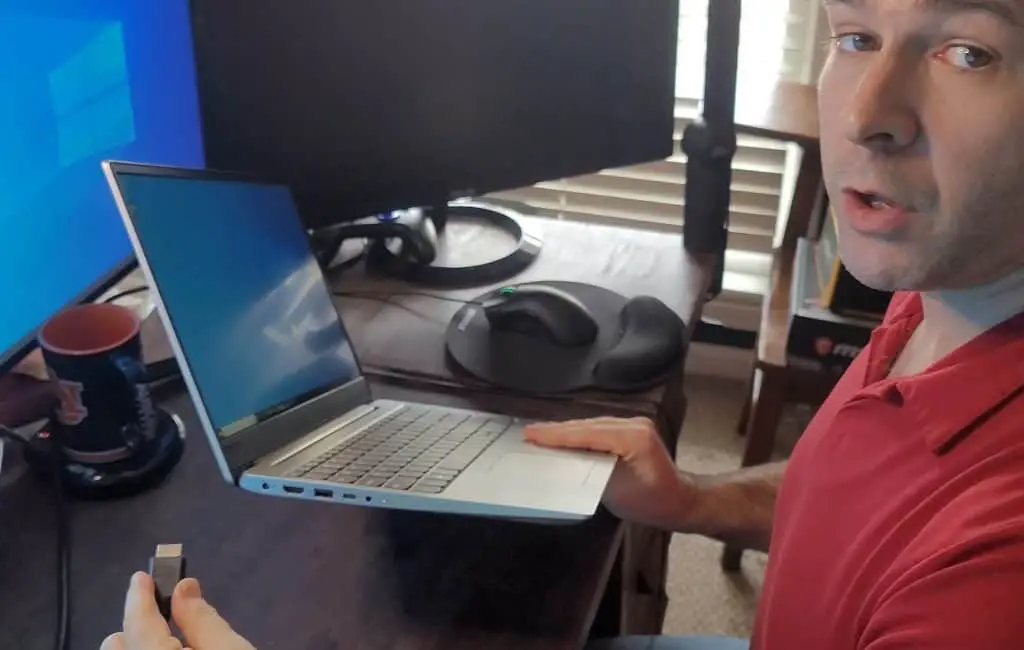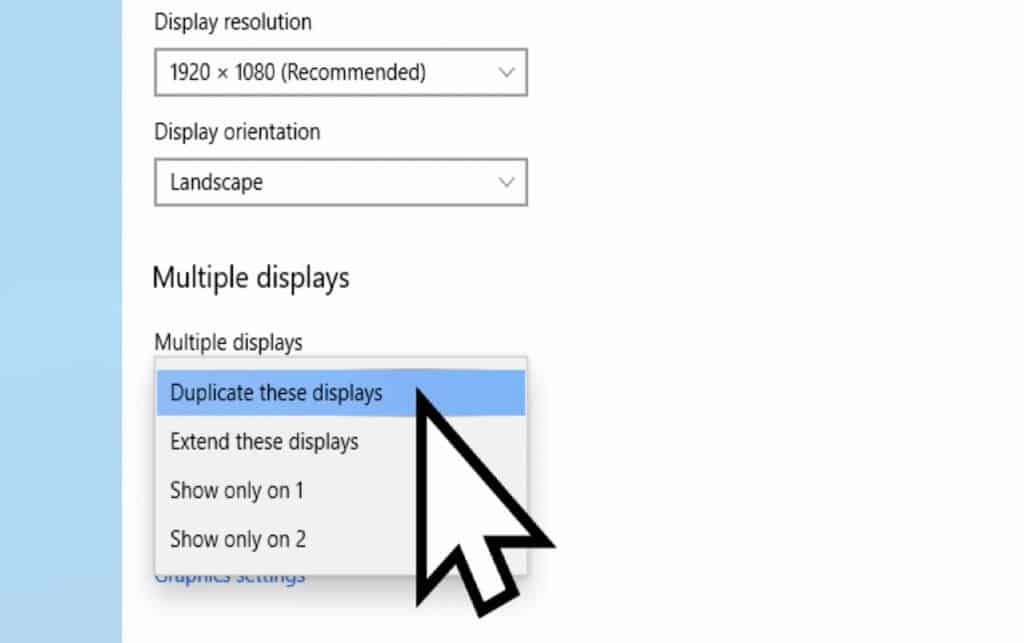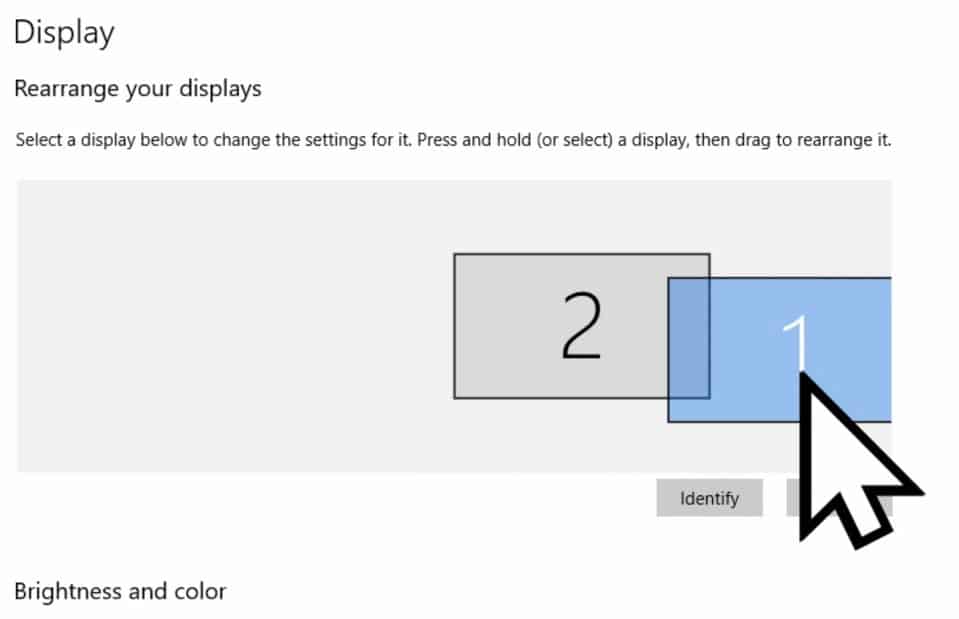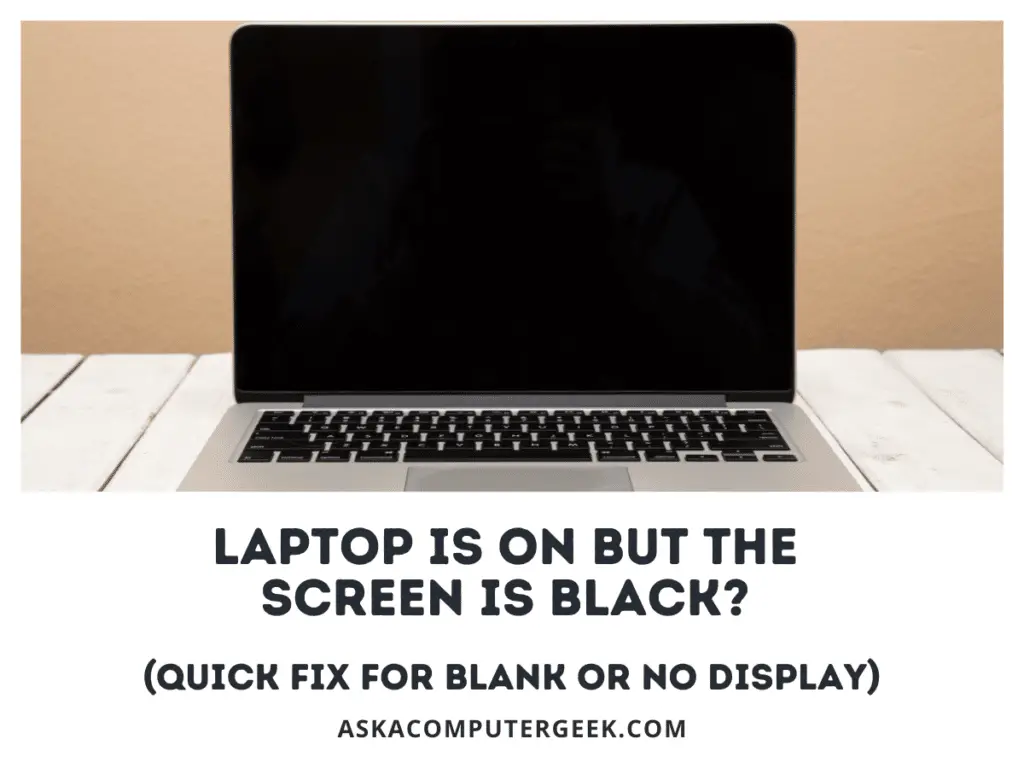A laptop works great in most situations but if you find yourself needing more screen space during your work you might want to connect it to an extra monitor (or even TV) using an HDMI cable.
Connecting a monitor to a laptop with HDMI is easy provided that you have an HDMI cable, your laptop has an HDMI port, and you have a monitor (or TV) with HDMI input. Simply connect the two together with the cable and then set the display positioning and behavior up the way you want them in the Windows 10 display settings.
Although the process for connecting a laptop to an external monitor is fairly straightforward there are some things you need to keep in mind in order to get the best experience.
How to connect a laptop to a monitor with HDMI in Windows 10
If you already have everything you need then the process of hooking up an external monitor to your laptop is pretty easy.
You will need an HDMI cable, a laptop with an HDMI port, and an external monitor (or TV) with HDMI input to connect your laptop to a monitor with HDMI.
If you don’t have a suitable cable or monitor then I recommend the following for maximum value:
- PowerBear 4k HDMI cable (10 feet) – Surprisingly cheap and extremely well-reviewed!
- Acer SB220Q 21.5 Inch Full HD monitor – An extra 21.5 inches of screen real estate for less than $100! Extremely well-reviewed (over 40,000 reviews)
If you aren’t sure if your laptop has an HDMI port, check out this article to learn more: How to tell if your laptop has an HDMI port.
If you have everything together already, let’s move on to the step-by-step guide. By the way, if you would rather watch a video on this topic then you can check out the video from my YouTube channel here.
Step 1 – Connect the HDMI cable to your laptop
Go ahead and connect the HDMI cable to your laptop in this first step.

Step 2 – Connect the other end of the HDMI cable to the back of your monitor
Next, connect the HDMI cable to the port on the back of your external monitor (or TV) and make sure the monitor is powered on.
Once you’ve made the connection, you should see your monitor turn on automatically with an exact copy of your laptop’s screen.

Step 3 – Extend your desktop to the monitor in ‘Display Settings’
Next, you’ll right-click anywhere on your laptop’s desktop and click on ‘Display Settings’ to open it up.
If you want to use your extra monitor to have access to more screen size then you’ll want to scroll down on the first page of settings until you see the ‘Multiple displays’ section.
Here, you’ll click the dropdown menu and select ‘Extend these displays’ to treat your monitor as an extension of the laptop’s screen.

Step 4 – Position your screen location
Now that you’ve extended your laptop’s screen onto the second monitor, we’ll need to make sure that Windows knows where your monitor is physically located in relation to your laptop’s screen so that your mouse’s cursor will move to the monitor correctly when you scroll over the edge.
Back in the ‘Display Settings,’ you’ll see two monitors under the ‘rearrange your displays’ section. By default, they are side by side with the primary display on the left. Hit the ‘identify’ button if you need to double-check which monitor is which. Then, simply drag your second monitor around so that it matches the physical location of it relative to your laptop screen.
For instance, if your external monitor is just to the right of your laptop screen, move it to the right. If it is hung on the wall above your laptop screen, drag it above the primary monitor. Move the monitor position up/down or left/right until you are able to move your cursor smoothly from your laptop screen to the monitor without issue.

Note: if your external monitor has a different resolution than your laptop screen, there will be some odd behavior when moving your cursor from one screen to the next. Unfortunately, there really isn’t a way around this.
Once you’ve got things the way you want them be sure to apply and save any changes that you’ve made!
As long as you keep your monitor connected to the laptop, you shouldn’t have to tweak these settings again. If you disconnect and reconnect your monitor, however, you might have to make sure it is tuned the way you want it again.
Can I connect a Display Port monitor to HDMI on my laptop?
If you have a laptop with HDMI but your external monitor only has a ‘Display Port’ option on the back, it is still possible to connect the two using an adapter.
An adapter like this is extremely affordable and this particular one has over 27,000 positive reviews on Amazon. Just be sure that you are getting a male to female adapter if your laptop has an HDMI port and your monitor only has a display port.



